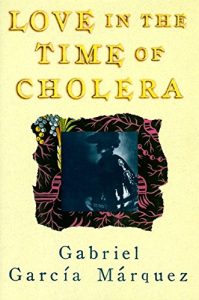Love in the Time of Cholera: A Novel of Love and Death
Introduction
Hello, my name is Fred and I’m a seasoned blog writer. I have a passion for literature and I enjoy analyzing the works of great authors. In this article, I will share with you my insights on one of my favorite novels, Love in the Time of Cholera by Gabriel García Márquez. This novel is a masterpiece of magical realism, a genre that blends realistic and fantastical elements to create a unique and captivating story. The novel revolves around the themes of love and death, and how they are intertwined in the lives of the characters. I will show you how the novel explores the different aspects of love, such as passion, fidelity, aging, and destiny, and how death affects the characters and their relationships. I hope you will find this article interesting and informative, and that it will inspire you to read or re-read this amazing novel.
About the Author
Before we dive into the novel, let me give you some background information about the author, Gabriel García Márquez. He was born on March 6, 1927 in Aracataca, Colombia. He grew up listening to his family stories and his childhood experiences in his hometown influenced his writing style. He studied law but became a journalist instead. He traveled to Paris in 1952 and met other writers such as Ernest Hemingway and Jean-Paul Sartre. He returned to Colombia in 1955 and started writing novels that reflected his personal and political views. He is considered one of the most influential writers of the 20th century and one of the founders of Latin American literature. He won several awards for his works, including the Nobel Prize in Literature in 1982. He died on April 17, 2014 in Mexico City, Mexico.
About the Novel
Love in the Time of Cholera was published in 1985 and is considered one of García Márquez’s best works. It tells the story of Florentino Ariza and Fermina Daza, two young lovers separated by circumstance. Set in a Caribbean port city against the backdrop of a cholera epidemic, the novel spans decades as Florentino patiently awaits Fermina’s love, while she marries another man. The novel explores themes such as love, aging, death, fidelity, and destiny through a magical realism style that blends realistic and fantastical elements.

The Different Facets of Love
One of the main themes of the novel is love, and how it manifests in different ways. The novel portrays the different facets of love, such as:
- Passion: Florentino and Fermina fall in love at first sight and exchange love letters for two years. Their love is intense and passionate, but also naive and idealized. They barely know each other and their love is based on their imagination and fantasy. Their passion is contrasted with the more pragmatic and rational love of Fermina and her husband, Dr. Juvenal Urbino, who marry for convenience and social status, but also develop a mutual respect and affection over time.
- Fidelity: Florentino vows to remain faithful to Fermina for his entire life, even after she rejects him and marries another man. He waits for more than 50 years for her to become a widow, and never gives up on his hope of reuniting with her. However, his fidelity is questionable, as he has numerous affairs with other women during his long wait. He claims that his affairs are only physical and that he never stops loving Fermina, but his actions show a lack of respect and commitment to his true love. Fermina, on the other hand, is faithful to her husband, even though she does not love him as much as Florentino. She honors her marriage vows and stays loyal to her husband until his death, despite his flaws and infidelities.
- Aging: The novel shows how love changes and evolves with aging. Florentino and Fermina’s love is young and idealistic at first, but matures and becomes more realistic and pragmatic as they grow older. Their love also faces the challenges of aging, such as physical decay, illness, and death. Florentino suffers from various ailments, such as hemorrhoids, constipation, and prostate problems, while Fermina loses her beauty, her teeth, and her memory. Their love also has to cope with the loss of their loved ones, such as Fermina’s husband, Florentino’s mother, and their friends and relatives.
- Destiny: The novel suggests that love is a matter of destiny, and that some people are meant to be together, no matter what. Florentino and Fermina’s love is portrayed as a fate that transcends time, space, and circumstance. They are destined to be together, even after decades of separation and obstacles. Their love is also a form of resistance against the forces of death and decay that surround them. They refuse to give up on their love, even when they are old and frail. They decide to sail away on a riverboat, defying the conventions of society and the threats of cholera. They choose to live their love in the time of cholera, as a way of affirming their life and their destiny.
The Impact of Death
Another major theme of the novel is death, and how it affects the characters and their relationships. The novel depicts the impact of death, such as:
- Loss: The novel shows how death causes loss and grief for the characters. Florentino loses his father when he is young, and his mother when he is old. He also loses his uncle, who is his mentor and benefactor, and his son, who is his illegitimate child. Fermina loses her husband, who is her companion and protector, and her father, who is her authority figure and oppressor. They also lose their friends and relatives, who are their support and comfort. Death leaves them alone and vulnerable, and forces them to face their own mortality.
- Change: The novel shows how death causes change and transformation for the characters. Florentino changes from a shy and timid boy to a confident and successful man, but also from a romantic and faithful lover to a cynical and promiscuous womanizer. Fermina changes from a rebellious and independent girl to a submissive and obedient wife, but also from a cold and distant woman to a warm and compassionate mother. Death also changes their relationship, as it gives them a second chance to rekindle their love, but also challenges them to accept each other’s flaws and differences.
- Rebirth: The novel shows how death causes rebirth and renewal for the characters. Florentino and Fermina’s love is reborn after the death of Fermina’s husband, as they reconnect and rediscover their feelings for each other. Their love is also renewed after the death of Florentino’s son, as they decide to start a new life together on the riverboat. Death also gives them a new perspective on life, as they realize the value and the fragility of their love, and the importance of living in the present and enjoying every moment.
Conclusion
In conclusion, Love in the Time of Cholera is a novel that explores the themes of love and death, and how they are intertwined in the lives of the characters. The novel portrays the different facets of love, such as passion, fidelity, aging, and destiny, and how death affects the characters and their relationships, causing loss, change, and rebirth. The novel also showcases the masterful use of magical realism, a genre that blends realistic and fantastical elements to create a unique and captivating story. Love in the Time of Cholera is a novel that will make you think, feel, and wonder about the meaning and the mystery of love and death.




